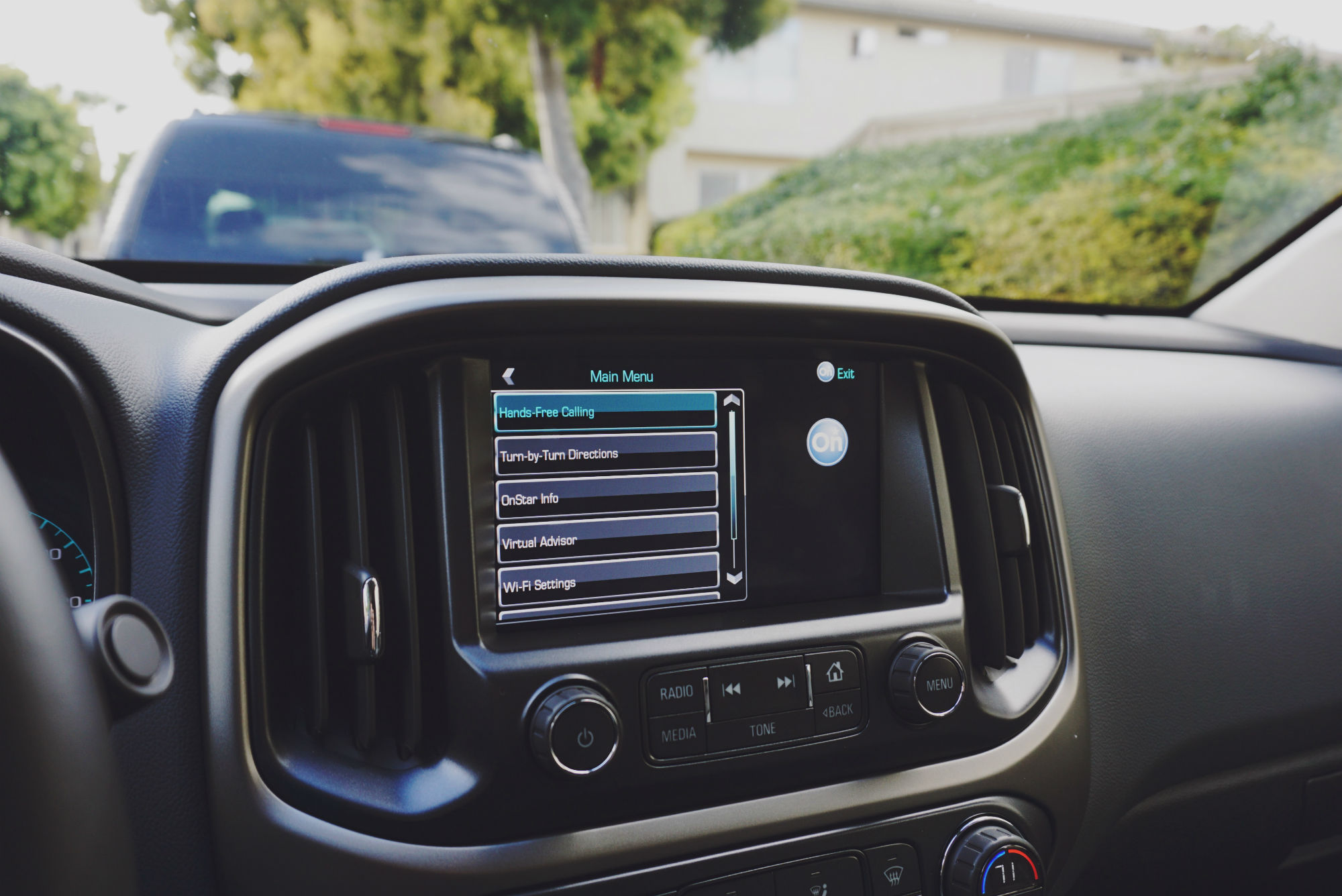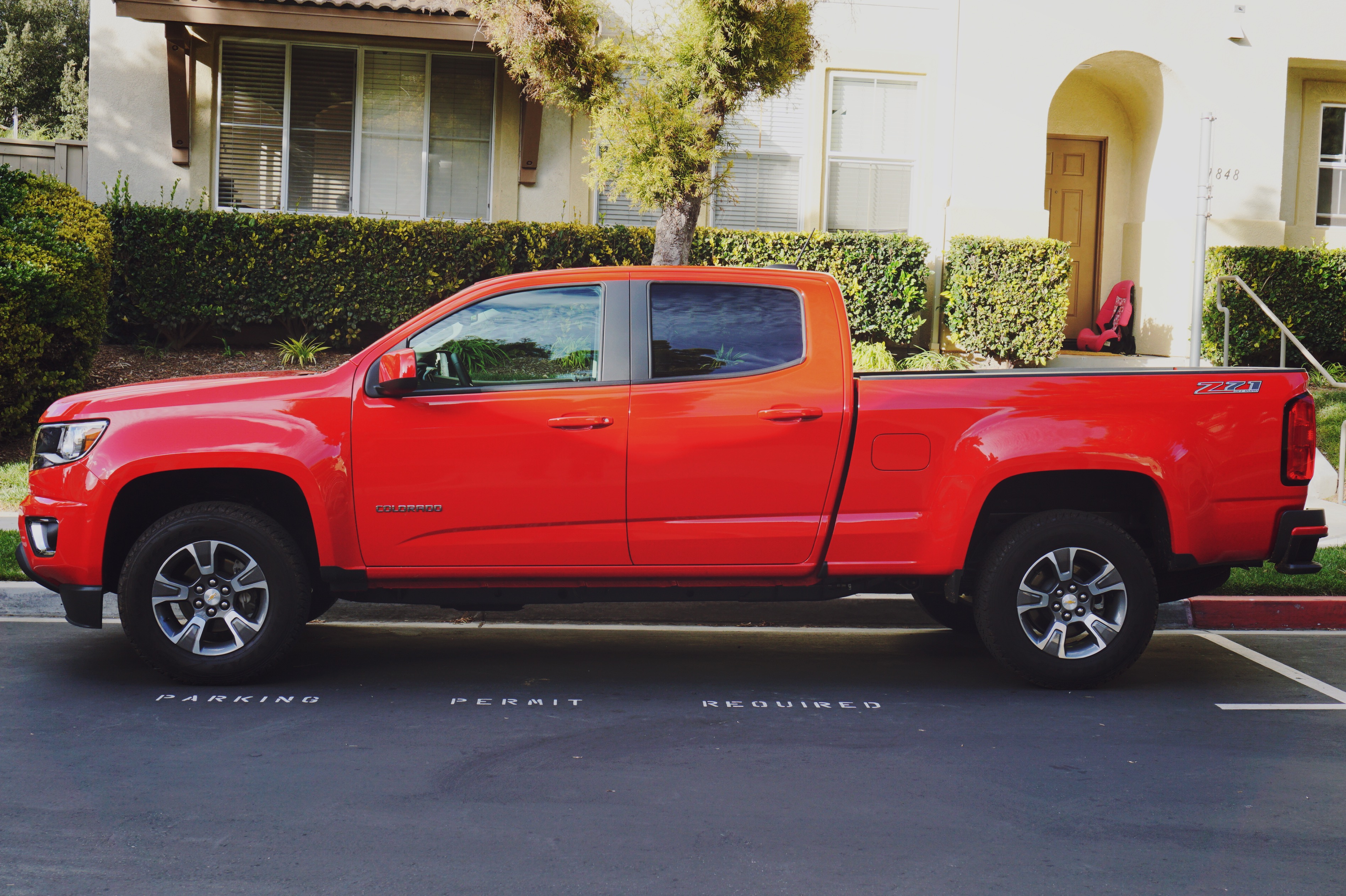The car as a Wi-Fi hotspot—to be able to take the Internet with you while driving—is a brilliant idea. In this case with OnStar’s 4G LTE Wi-Fi hotspot, that means that whenever the vehicle is powered on, it’s also broadcasting a Wi-Fi signal that up-to seven devices can connect to.
Despite its somewhat superfluousness, it is at least convenient. The problem that OnStar’s 4G LTE car-as-the-hotspot implementation is solving, however, has become a lot less of a problem over the last year. And, my guess is the car with a dedicated Wi-Fi hotspot will likely turn out to be a fad by the time it has a chance to reach the majority of car buyers.
When the wireless carriers upgraded their networks to the faster LTE speeds and more phones were including the necessary hardware, Wi-Fi became less of a necessity and more of a nicety. Carriers like AT&T and Verizon have also started revolving their wireless plans around data instead of minutes and talk-time which means that more people now have bulk data plans to use in different ways—using the phone as a Wi-Fi hotspot, for example.
We’re still in a window of time right now where it’s reasonable that despite your phone’s fast cellular Internet connection, you still opt for Wi-Fi in your new car.
I tested a bright red 2015 Chevy Colorado with OnStar’s built in Wi-Fi function to see what it was like. Is it a feature that demands attention or is it the equivalent of an extra ill placed cupholder?
Using The Wi-Fi

Stepping into the well equipped truck, I hoping to be taken into a new realm of technological driving. Beyond just the Wi-Fi connectivity, OnStar does provide an app and other advanced features after all. The short version unfortunately is that I wasn’t wowed by the technology side of this new Chevy Colorado.
It was not like driving a Tesla Model S. Instead of the technology feeling integrated and part of the experience, it felt tacked on. Part of the extra features feeling like an after thought also means that a lot of them are more complicated than they need to be.
Fortunately the Wi-Fi itself is easy to use. Broadcasting Wi-Fi feels like something that you’d need to turn on each time you wanted to use it, but it’s not. Whenever the car is on, so is the wireless internet.
Unlike a mobile phone or dedicated Wi-Fi hotspot that means that battery life isn’t a concern—the car is powering the experience. Also, even though your smart phone has cellular connectivity, connecting it to Wi-Fi won’t count against your mobile phone plan. This is where the benefits run out, however.
The 4G LTE connection provided by OnStar isn’t cheap—it’s probably the same price, if not more expensive, compared to adding on extra data to your existing phone’s plan. Current (non-OnStar subscriber) rates on the website are listed at $20 a month for 1 GB of data and $200 a year for 10 GB of data.
Keep in mind that the standard definition version of a movie like Big Hero 6 on iTunes is listed at 1.54 GB in size. If you wanted to buy and download that movie you’d spend the price of the movie plus more than $20 on your car’s Wi-Fi data costs for that month.
Beyond the price, I ran into many times when OnStar’s Internet service wasn’t very fast—in my week long test it often was slow when interacting with music or video. Streaming songs from my Bluetooth paired phone often resulted in songs cutting out as they buffered.
Using it to stream Sling TV’s web television caused it to repeatedly buffer and drop the picture. Since the connection speed is divided among devices connected, if you really did have seven tablets or computers using the Wi-Fi, it likely wouldn’t prove useful at all.
Testing several different days and locations my average speed was 1.5 Mbps down and 1.8 Mbps up. My AT&T iPhone, conversely, regularly received 20 Mbps down and 15 Mbps up—a faster upload speed than even my Cox Cable home Internet. This limited speed would suffice in a pinch, but slow Internet may be more frustrating than no Internet truth be told.
I was told by OnStar that the slow speeds weren’t normal—the company’s connectivity is provided by AT&T too. But it was a consistent speed and experience each time I checked over the course of an entire week.
Other Technology Features

Thanks to OnStar’s mobile app I was able to see (on a map) the Chevy Colorado being driven down from Los Angeles to San Diego. I watched the truck head down the freeway. I saw the gas tank go from 20 percent remaining to full. I was also able to see each tire’s individual pressure in real-time.
Being able to track the truck I had a good idea of when it would arrive inside the two hour window given for delivery. It was definitely a neat feature and use of technology.
But just like the backhanded nature of the slow Wi-Fi, the app also has some severe limitations that make me question whether it’s even worth bothering with at all. The most egregious are the bugs and lack of priority the app seems to be given. Testing on an iPhone 6 Plus, the app hasn’t been updated for the larger screen despite the new phones being out for more than five months. The app also engaged the location services after being closed which added more strain on the battery than need be.
Beyond the visuals or bugs of the app itself, there’s also the poor performance it exhibited. For example, when using the app to unlock the doors, it required a 10 second delay as it connected remotely. The app functioned, but it was a frustrating experience rather than a delight.
Possibly the icing not the cake is that the app is close to being good. Upon downloading it and using it to track the vehicle I couldn’t see why it had such a poor rating in the App Store. Then, after the bugs, visual inadequacies, and poor performance, I began to understand.
Verdict
All of the features and functions that OnStar and these different car manufacturers, like Chevy, are implementing are exciting—truly. But it’s their execution which manages to dissipate all the hope that anyone will be able to meaningfully compete with Tesla and future auto industry startups.
Cars should be smart and offer advanced connectivity, a new sort of mobile office in a sense. And while that could be the case to some degree here, never did it feel like this Chevy Colorado was an optimal work space at all.
Is adding this dedicated Wi-Fi hotspot feature to a new car purchase worth it? No, I don’t think it is. But, truth-be-told, when you’re spending $36,000 on a new vehicle, adding an extra $200 for a year’s worth of Internet service to the car—less than most dealership sold floor mats—might be hard not to do.
